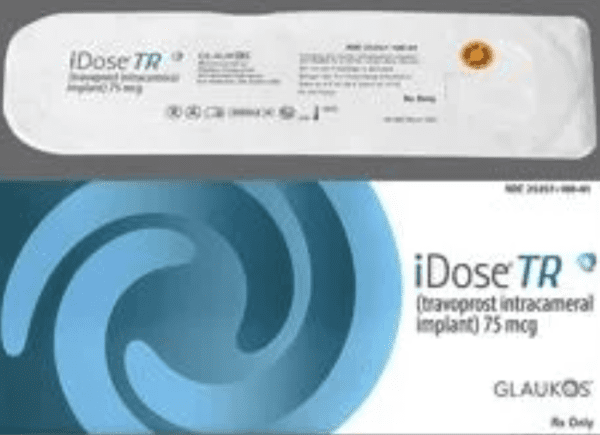Travoprost ophthalmic Disease Interactions
There are 3 disease interactions with travoprost ophthalmic.
Ophthalmic PG analogues (applies to travoprost ophthalmic) macular edema
Moderate Potential Hazard, Moderate plausibility. Applicable conditions: Aphakia, Pseudophakia, Retinal Disorder
Macular edema, including cystoid macular edema, has been reported during treatment with ophthalmic prostaglandin analogues. Most cases occurred in patients with aphakia, pseudophakia with a torn posterior lens capsule, or known risk factors for macular edema (e.g., posterior uveitis, certain retinal disorders). Therapy with ophthalmic prostaglandin analogues should be administered cautiously in these patients.
Ophthalmic PG analogues (applies to travoprost ophthalmic) uveitis
Moderate Potential Hazard, Moderate plausibility.
Bimatoprost, latanoprost, and travoprost are synthetic prostaglandin analogues. Theoretically, these agents may mimic endogenous prostaglandins and mediate ocular inflammatory responses. In clinical trials, uveitis and iritis have been reported rarely. Therapy with ophthalmic prostaglandin analogues should be administered cautiously in patients with active intraocular inflammation.
Ophthalmic PGF2a analogues- renal/liver disease
Moderate Potential Hazard, Low plausibility. Applicable conditions: Renal Dysfunction
Prostaglandin F2-alpha analogues are hydrolyzed by esterases in the cornea to their corresponding active free acid form, which is absorbed systemically and metabolized by the liver via fatty acid beta-oxidation, then eliminated by the kidney. These agents have not been adequately studied in the treatment of patients with impaired renal and/or hepatic function. Therapy with ophthalmic prostaglandin F2-alpha analogues should be administered cautiously in such patients.
Switch to professional interaction data
Travoprost ophthalmic drug interactions
There are 7 drug interactions with travoprost ophthalmic.
More about travoprost ophthalmic
- travoprost ophthalmic consumer information
- Check interactions
- Compare alternatives
- Pricing & coupons
- Reviews (15)
- Side effects
- Dosage information
- During pregnancy
- Drug class: ophthalmic glaucoma agents
- Breastfeeding
- En español
Related treatment guides
Drug Interaction Classification
| Highly clinically significant. Avoid combinations; the risk of the interaction outweighs the benefit. | |
| Moderately clinically significant. Usually avoid combinations; use it only under special circumstances. | |
| Minimally clinically significant. Minimize risk; assess risk and consider an alternative drug, take steps to circumvent the interaction risk and/or institute a monitoring plan. | |
| No interaction information available. |
See also:
Further information
Always consult your healthcare provider to ensure the information displayed on this page applies to your personal circumstances.


